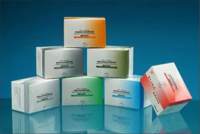This chapter provides a detailed description of the three immobilization methods based on the biomolecules entrapment into polymer matrices. The poly (vinyl alcohol) bearing styrylpyridinium groups (PVA-SbQ), a soluble pre-polymer bearing photo-cross-linkable groups, has widely been used to entrap enzymes, and several bioassays based on this immobilization matrix have been reported. Similarly, immobilization of enzymes via sol–gel has been described in this chapter. Sol–gel process is based on the ability to form solid metal or semi-metal oxides via the aqueous process of hydrolytically labile precursors. Enzymes can also be entrapped in an agarose gel. Contrary to synthetic polymers such as polyacrylamide, this matrix is biocompatible, non-toxic, provides natural microenvironment to the enzyme and also gives sufficient accessibility to electrons to shuttle between the enzyme and the electrode. The entrapment strategies are easy-to-perform, and permit to deposit enzyme, mediators, and additives in the same sensing layer. Moreover, the activity of the enzyme is preserved during the immobilization process, as biological element is not modified. Biosensors based on physically entrapped enzymes are often characterized by increased operational and storage stability






